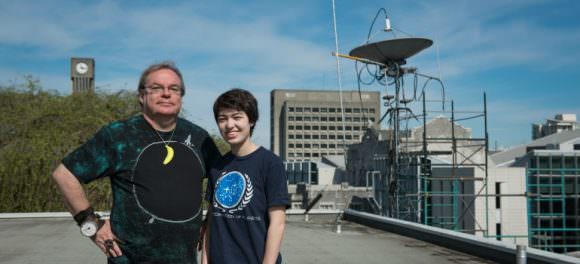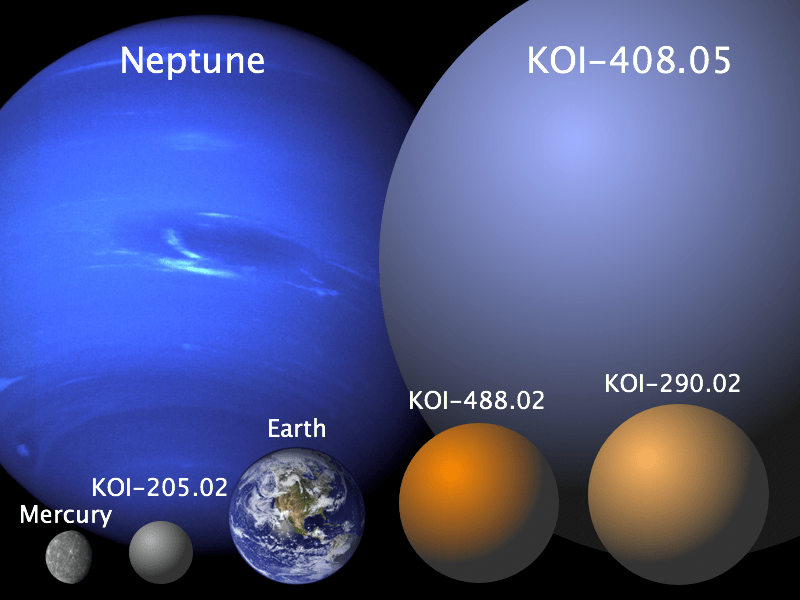A student at the University of British Columbia (UBC), Canada, has discovered four new exoplanets hidden in data from the Kepler spacecraft.
Michelle Kunimoto recently graduated from UBC with a Bachelor’s degree in physics and astronomy. As part of her coursework, she spent a few months looking closely at Kepler data, trying to find planets that others had overlooked.
In the end, she discovered four planets, (or planet candidates until they are independently confirmed.) The first planet is the size of Mercury, two are roughly Earth-sized, and one is slightly larger than Neptune. According to Kunimoto, the largest of the four, called KOI (Kepler Object of Interest) 408.05, is the most interesting. That one is 3,200 light years away from Earth and occupies the habitable zone of its star.
“Like our own Neptune, it’s unlikely to have a rocky surface or oceans,” said Kunimoto, who graduates today from UBC. “The exciting part is that like the large planets in our solar system, it could have large moons and these moons could have liquid water oceans.”
Her astronomy professor, Jaymie Matthews, shares her enthusiasm. “Pandora in the movie Avatar was not a planet, but a moon of a giant planet,” he said. And we all know what lived there.
On its initial mission, Kepler looked at 150,000 stars in the Milky Way. Kepler looks for dips in the brightness of these stars, which can be caused by planets passing between us and the star. These dips are called light curves, and they can tell us quite a bit about an exoplanet.
“A star is just a pinpoint of light so I’m looking for subtle dips in a star’s brightness every time a planet passes in front of it,” said Kunimoto. “These dips are known as transits, and they’re the only way we can know the diameter of a planet outside the solar system.”

One of the limitations of the Kepler mission is that it’s biased against planets that take a long time to orbit their star. That’s because the longer the orbit is, the fewer transits can be witnessed in a given amount of time. The “warm Neptune” KOI 408.05 found by Kunimoto takes 637 days to orbit its sun.
This long orbit explains why the planet was not found initially, and also why Kunimoto is receiving recognition for her discovery. It took a substantial commitment and effort to uncover it. Kepler has discovered almost 5,000 planet and planet candidates, and of those, only 20 have longer orbits than KOI 408.05.
Kunimoto and Matthews have submitted the findings to the Astronomical Journal. They may be the first of many submissions for Kunimoto, as she is returning to UBC next year to earn a Master’s Degree in physics and astronomy, when she will hunt for more planets and investigate their habitability.
The fun didn’t end with her exoplanet discovery, however. As a Star Trek fan (who isn’t one?) she was lucky enough to meet William Shatner at an event at the University, and to share her discovery with Captain James Tiberius Kirk.
It makes you wonder what other surprises might lie hidden in the Kepler data, and what else might be uncovered. Might a life-bearing planet or moon, maybe the only one, be found in Kepler’s data at some future time?
You can read Kunimoto’s paper here.

